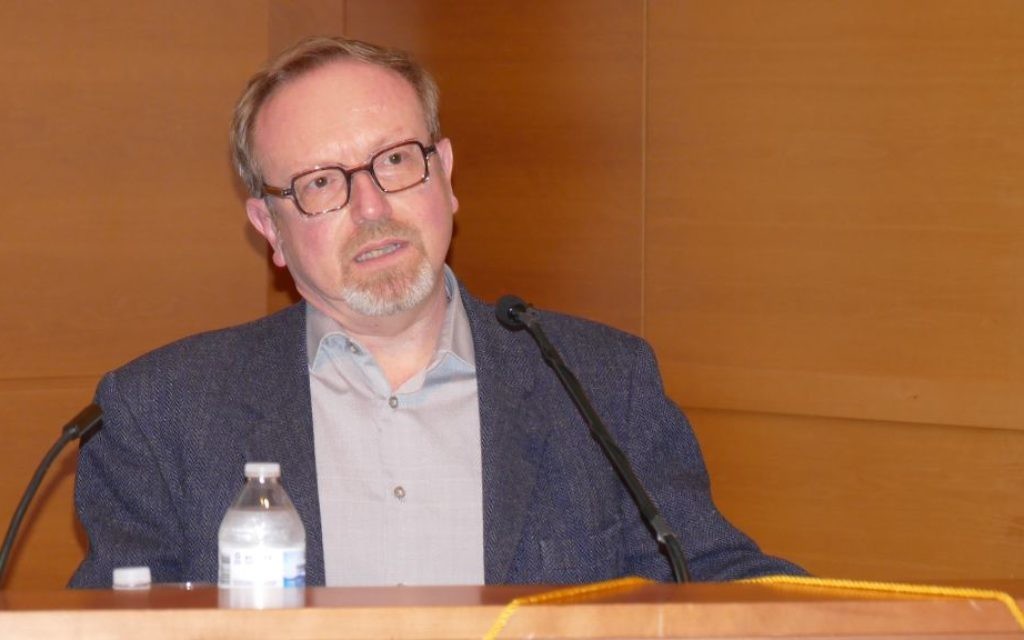Ottoman Empire Carried Sephardim Up and Down
The Jews who fled Spain and Portugal formed a new community that couldn't outlast its home, Aron Rodrigue says.

The expulsion of Jews from the Iberian Peninsula at the end of the 15th century led to the creation of a distinct Sephardic Jewish community in the Ottoman Empire until its collapse in the 20th century.
For thousands of years before the resettlement of Sephardim, Greek-speaking Jews lived in the lands of the Ottoman Empire and possessed their own liturgy, customs and culture. But those Jews had to assimilate into the larger group of Sephardic Jews who arrived, Stanford University Jewish history professor Aron Rodrigue said at Emory University’s Carlos Museum on Monday, Feb. 12.
His presentation on “The Making and Unmaking of Sephardi Jewry: The Ottoman Centuries” was the Tam Institute for Jewish Studies’ 22nd annual Tenenbaum Family Lecture in Judaic Studies.
Get The AJT Newsletter by email and never miss our top stories Free Sign Up
The Jewish community in Turkey is still referred to as a “guest community,” raising political questions about the diversity of Sephardic Jewry, Rodrigue said.
The assimilation of Byzantine Jews into the larger Sephardic community did not occur without a struggle, he said. The rabbis did not accept the different languages and rituals coming from outside the empire, and the communities battled over how to practice Judaism.
The Ottoman Empire implemented strategic resettlement policies that moved Jews around and created populations that were economically useful, Rodrigue said. The demographic shifts re-created trade routes and helped revive communities in certain areas.
As Sephardim spread through the Ottoman Empire, they brought their culture and language. Jews from Spain spoke the local dialect until a uniform language emerged that combined Spanish with Hebrew, Turkish and Greek words: Ladino or el ladinado, which means “turned into a Latin language.”
Ladino is recognized as a Romance language with strong influences from Hebrew.
By the mid-17th century a rabbinical literature written in Ladino emerged. It was used to re-educate the masses in their own language, Rodrigue said, and led to the rise of Ladino books and newspapers.
Rodrigue spoke about the profound nature of the Jewish communities under the Ottoman Empire. They were no longer Spanish Jews living in exile, but Greeks, Armenians and Turks in places such as Sarajevo, Salonica and Rhodes.
The communities were by and large polyglot, he said. People knew their place and would barter in the bazaars with established boundaries.
Massive assimilation led to the adoption of pan-Eastern Mediterranean foods and customs, including music, Rodrigue said. Sephardic or Eastern Mediterranean liturgical music is adapted from Muslim high-court music, he said.
By the 19th century major incursions from the West, such as the industrialization of Europe, attacks from Russian armies and the rise of nationalism, began to divide the Ottoman Empire, Rodrigue said. The changes directly affected Sephardim because if they became part of a new nation-state, they inevitably became a minority and begin to experience anti-Semitism.
Culturally, Sephardic Jews changed under the Ottoman Empire as their traditional education system was replaced by French Jewish schooling. But the Western teachings complicated matters for Sephardim, who sought to blend into nations, which desired a single language, culture and ethnicity.
As a result, the Sephardic culture and Ladino language were declining as the Ottoman Empire collapsed early in the 20th century.
“Once removed from the Ottoman setting, there is simply no way this part of the Jewish world maintains itself,” Rodrigue said. “By the 20th century we have witnessed a massive dislocation and disintegration of a traditional Jewish world.”




comments